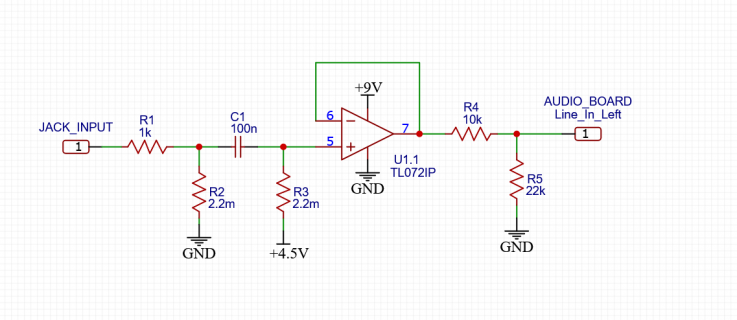I'm making a pedal for someone to use with a synth, but the circuit is designed for guitar. As I understand it, impedance matching is the only major issue when running synths into guitar pedals, which can normally be overcome by simply attenuating the synth output... but is there any chance that a synth could damage a Teensy?
This is the analog circuitry for the input section, I have PCBs for this design but i can change the components. Would it be worth using lower values for R2 and R3 for a more synth-friendly input impedance? Any suggestions for values?

Thanks!
This is the analog circuitry for the input section, I have PCBs for this design but i can change the components. Would it be worth using lower values for R2 and R3 for a more synth-friendly input impedance? Any suggestions for values?

Thanks!

